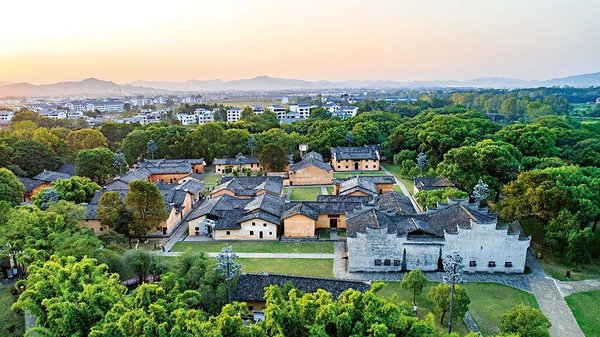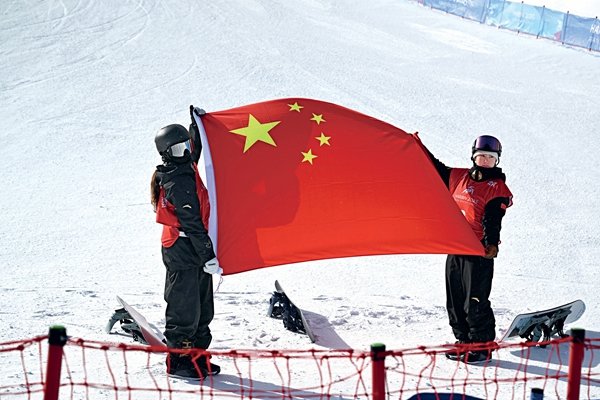Discovery | Ruijin: Cradle of Chinese Revolution

Ruijin, a city in east China's Jiangxi Province, has a history that dates back more than 1,000 years. Ruijin, known as the cradle of the Chinese Revolution, is one of the starting points of the Long March of the Central Red Army.
Ruijin is situated in southeastern Jiangxi Province, where Jiangxi borders southeast China's Fujian Province. Ruijin, widely known as China's "red capital," is abundant in red tourism resources. The title, "red capital," originated from the establishment of the political power of the Communist Party of China (CPC) during the early 1930s.
In November 1931, the Chinese Soviet Republic, forerunner of the People's Republic of China (PRC), was established by the CPC in Ruijin. During the First National Congress of the Chinese Soviet Republic, Mao Zedong was elected Chairman of the Provisional Central Government of the Chinese Soviet Republic. Ruijin was named the capital of the Chinese Soviet Republic.

In October 1934, led by the CPC, the Central Red Army (also called the First Front Army of the Red Army) left Ruijin and nearby Yudu, to break the siege of Kuomintang forces, and to continue the fight against Japanese aggressors. That strategic operation became known as the world-famous Long March, a remarkable achievement in modern Chinese history.
The city's glorious revolutionary history resulted in a diverse collection of relics and cultural resources. Ruijin PRC Cradle Scenic Tourist Area, which covers 4,550 mu (303 hectares), is a must-see for tourists. The scenic area consists of four scenic spots: Yeping, Hongjing (Red Well), Second National Congress of the Chinese Soviet Republic, and Chinese Soviet Republic Memorial Park.

Yepin Scenic Spot is located in Yepin, a village in Ruijin. It is the birthplace of the Central Government of the Chinese Soviet Republic. There are more than 20 revolutionary sites or buildings in Yeping. Tourists can visit the old hall, where the CPC convened the First National Congress of the Chinese Soviet Republic. They can also tour the rooms that served as offices of the government's ministries.
The Red Well is situated in Shazhouba, a town in Ruijin. In the past, villagers were afraid to dig wells in Shazhouba, a drought-hit region, due to superstition and poverty. They had to fetch dirty water from a pond. In 1933, Mao led soldiers and residents in digging a well. After that, the locals were able to drink fresh, clean water. The locals named it Red Well in memory of Mao. Now, many tourists visit the scenic spot, and they fetch and taste the sweet well water.

The site of the Second National Congress of the Chinese Soviet Republic (held in 1934) is also located in Shazhouba. The auditorium for the congress was the only large house, built by the Red Army, in the area during the 1930s. The auditorium is in the shape of a Red Army hat. The locals call it the predecessor of the Great Hall of the People, in Beijing.
Chinese Soviet Republic Memorial Park is located in western Ruijin. The park, divided into two parts, is a large, red-tourism site. The southern part of the park has various attractions, including the Revolutionary Martyr Memorial and Red Army Martyrs Pavilion. The northern section houses the historical museum of the Central Revolutionary Base Area.

"Visiting the red tourism sites makes us cherish our current life even more. It also helps young people better understand the heroic deeds of the pioneers who sacrificed their lives for the country," says one visitor, surnamed Zhou.
Ruijin is also home to the Hakka (literally meaning "guest families") people, the migrants in southern China who migrated from regions adjacent to the Yellow River during ancient times. During their migration, the Hakka people developed their own, unique culture, including language, customs and dwellings. Weiwu, or enclosed house, is the traditional residential building of the Hakka people in Ruijin. The enclosed house, which is usually a fortified earthen building, with thick, load-bearing walls, is an icon of Hakka culture. The unique buildings of the Hakka people form a magnet, which draws visitors and shutterbugs to Ruijin.
Photos from Tuchong and VCG
(Women of China English Monthly October 2024)
Editor: Wang Shasha
Please understand that womenofchina.cn,a non-profit, information-communication website, cannot reach every writer before using articles and images. For copyright issues, please contact us by emailing: website@womenofchina.cn. The articles published and opinions expressed on this website represent the opinions of writers and are not necessarily shared by womenofchina.cn.








.jpg)

 WeChat
WeChat Weibo
Weibo 京公网安备 11010102004314号
京公网安备 11010102004314号